I’ve been doing some figure drawing gestures recently as a warm up (or just the main event) when I sit down to draw. For these I’ve used Line of Action’s figure drawing class mode.
~30 seconds 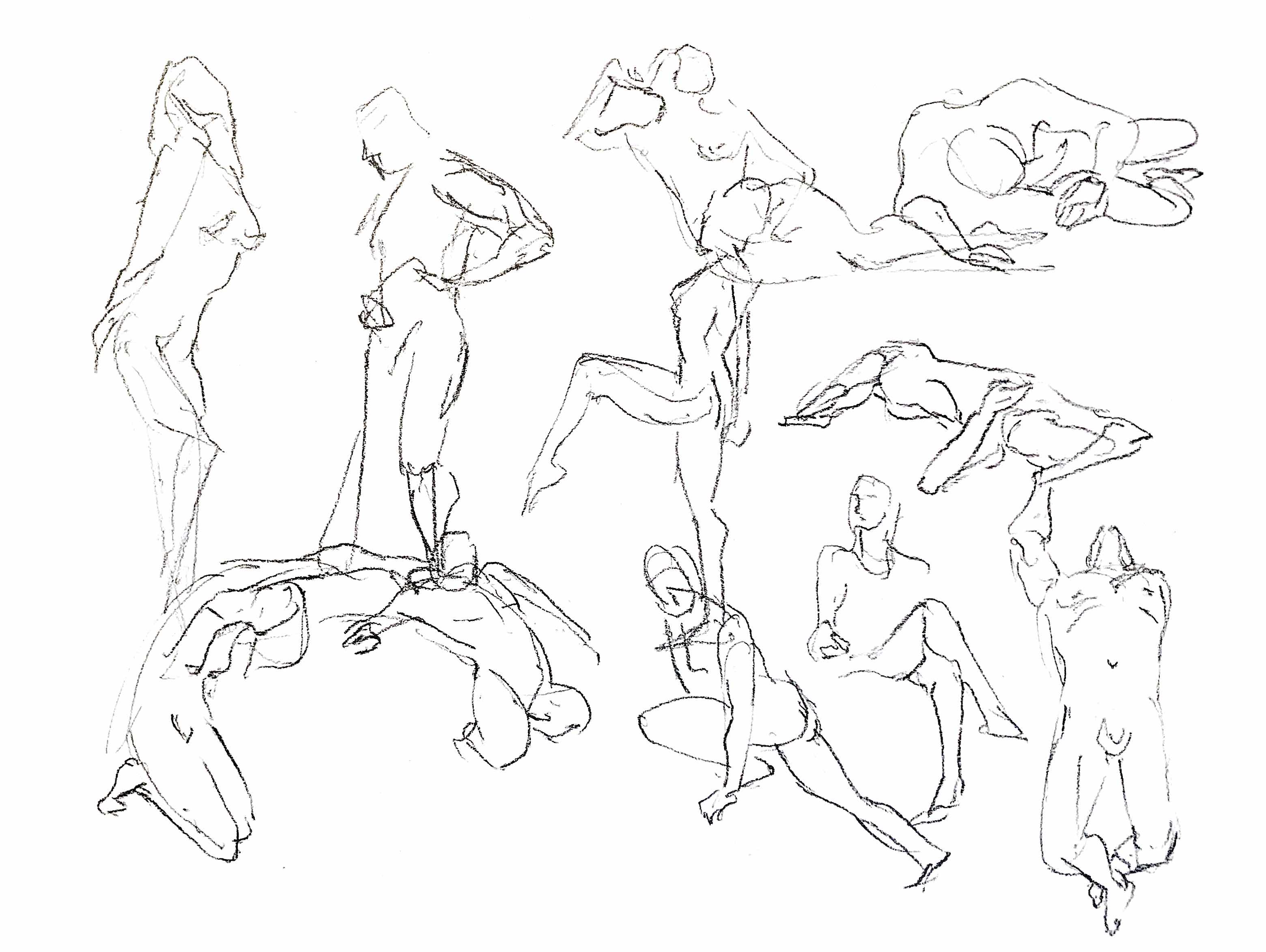
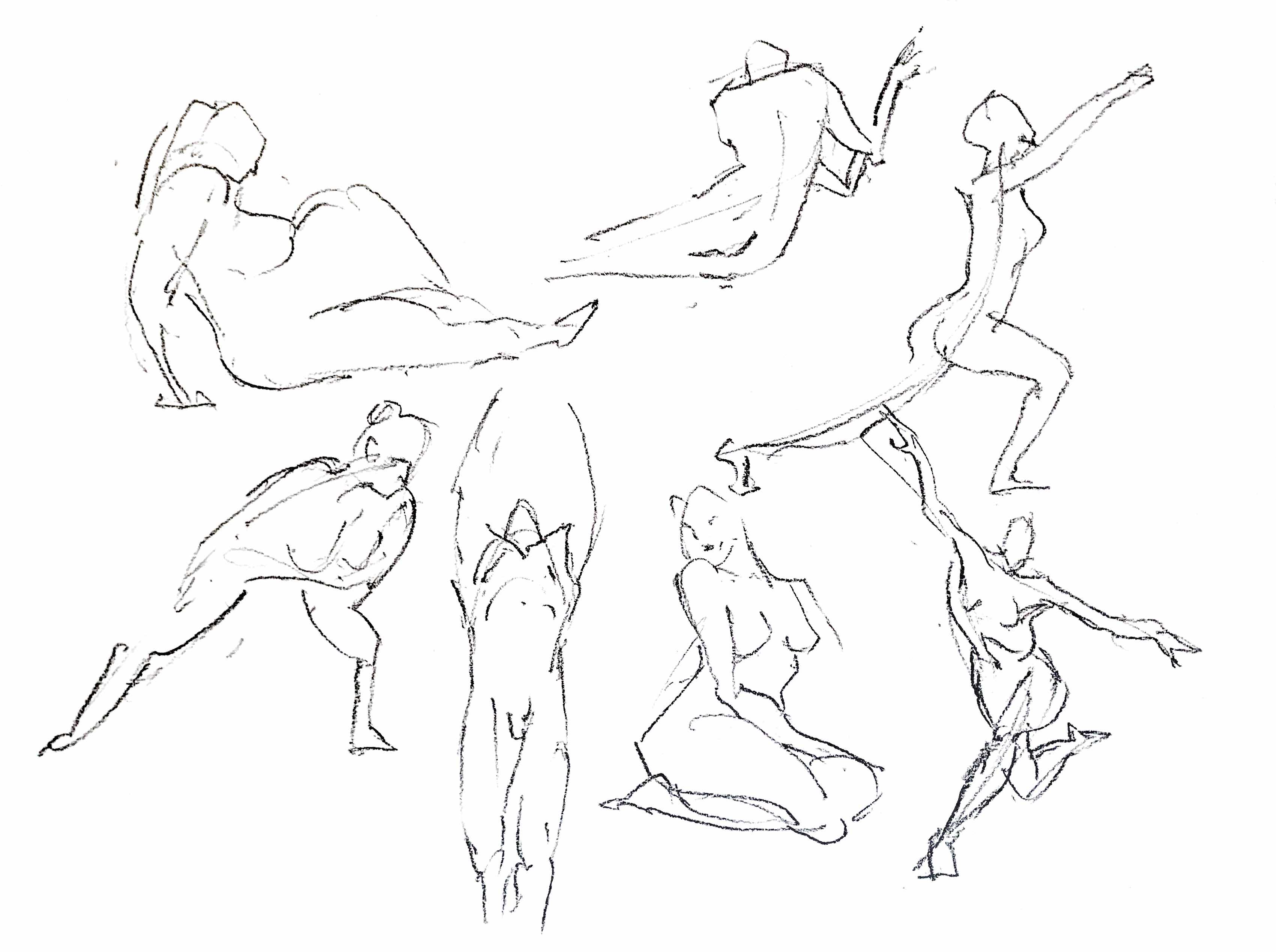 ~1 minute
~1 minute 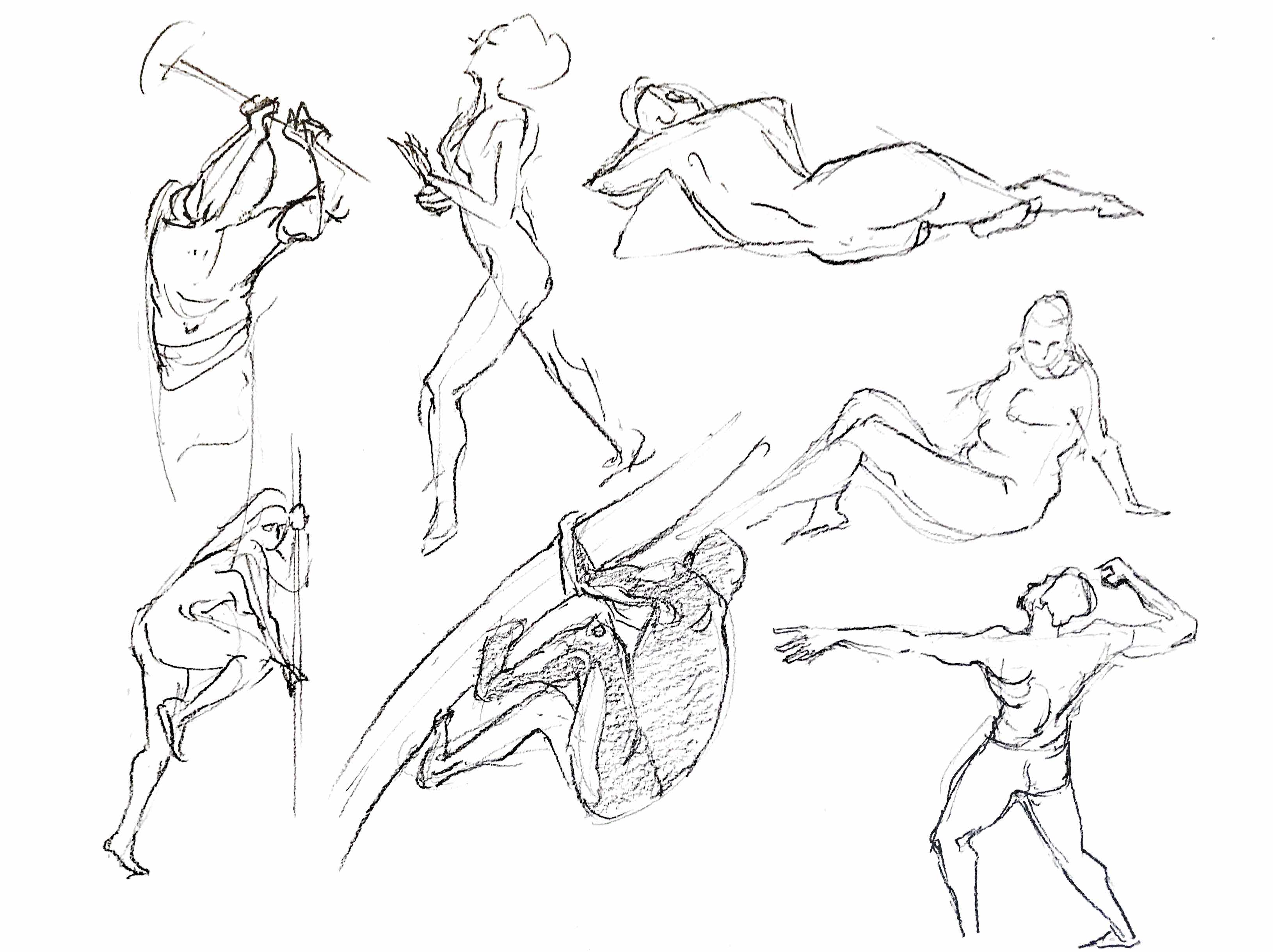
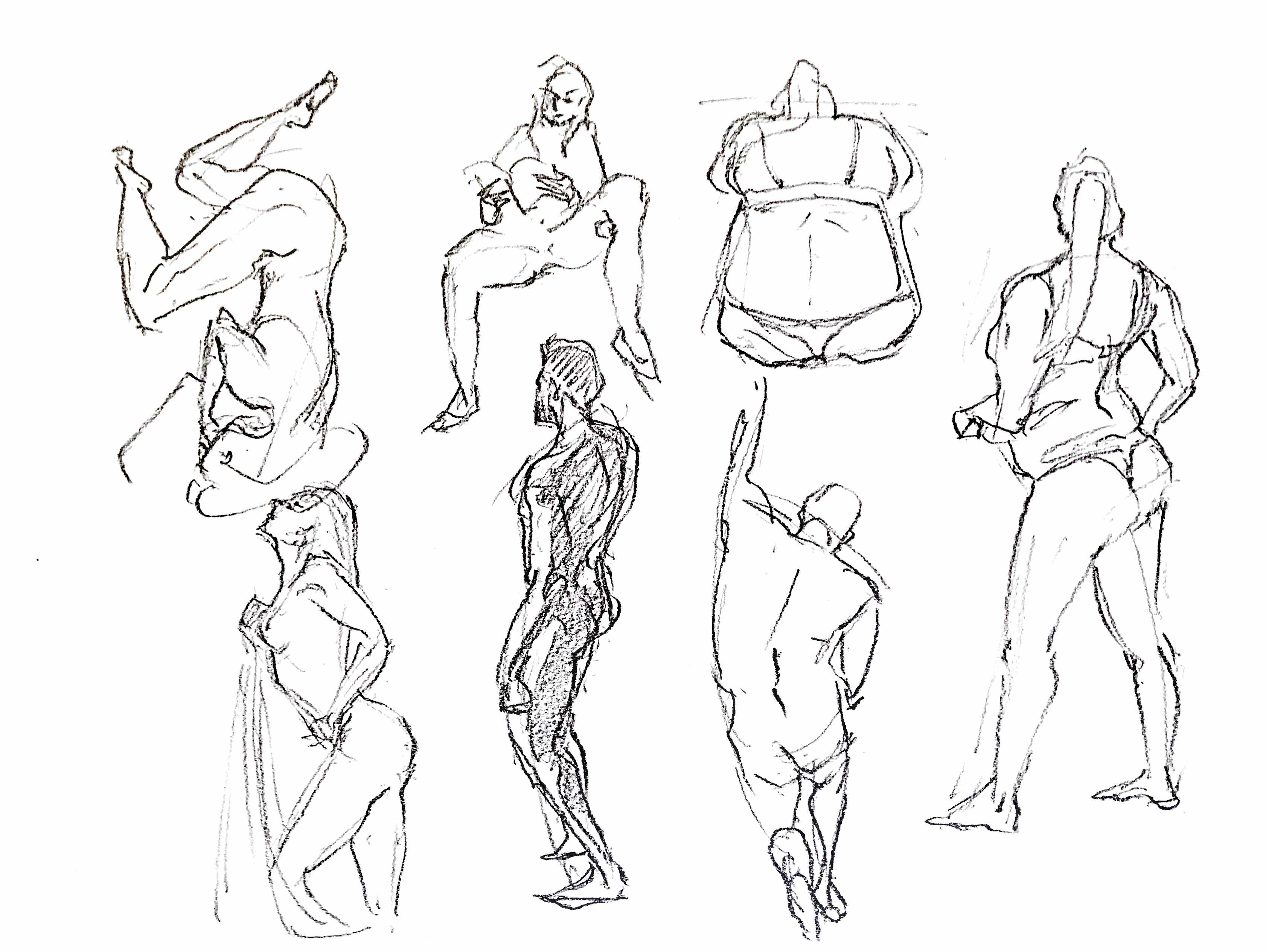 ~5 minutes
~5 minutes 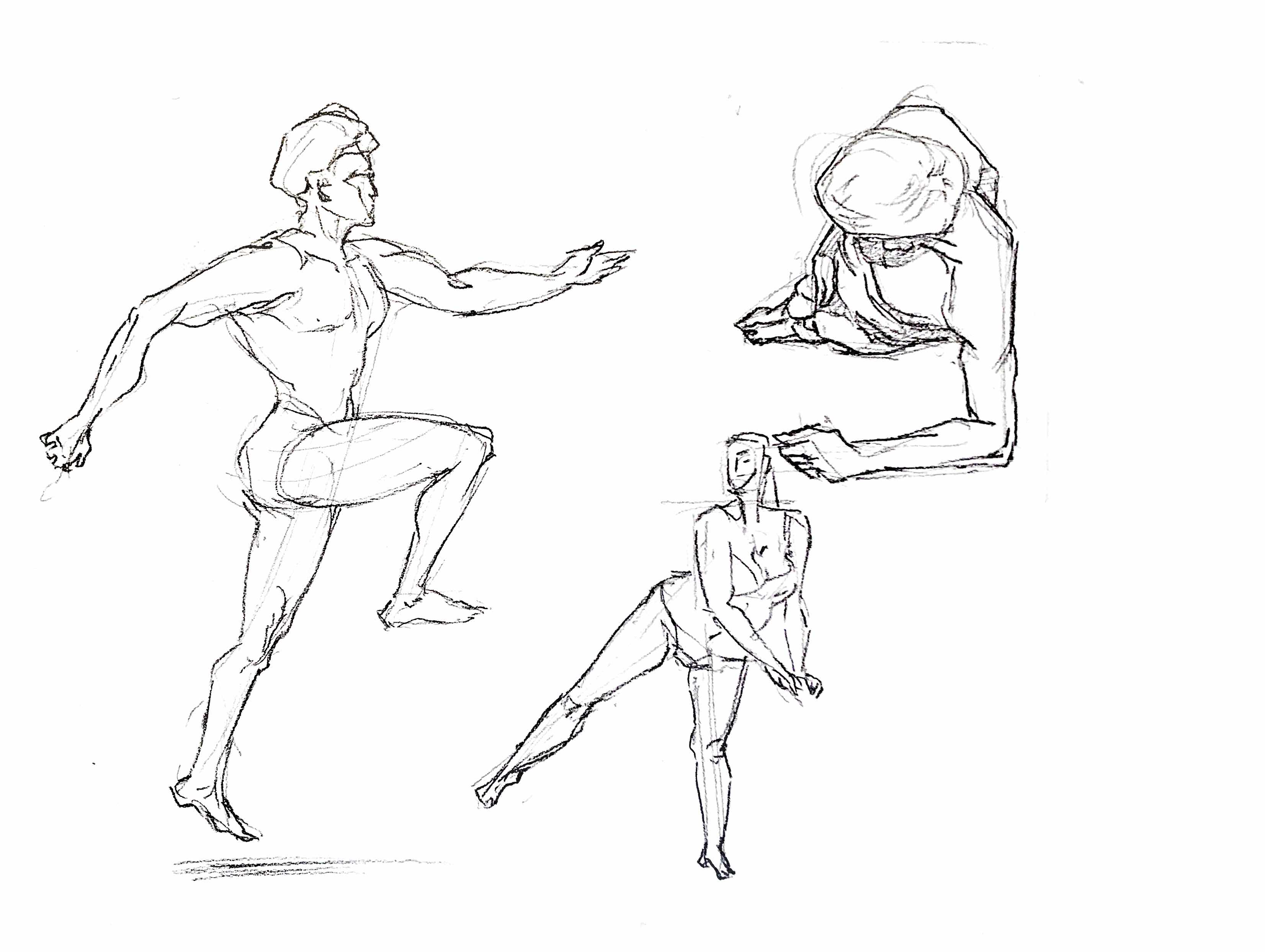
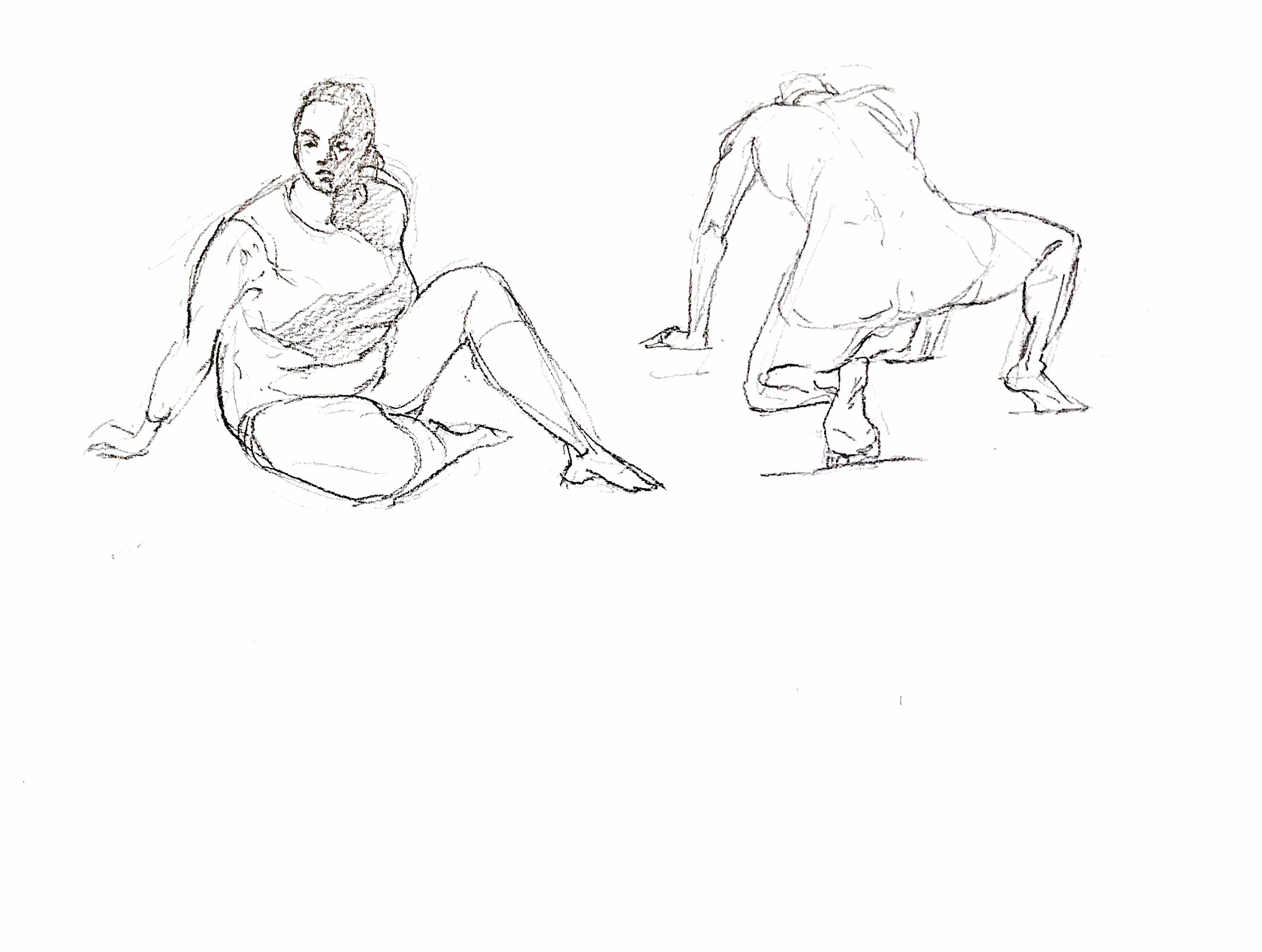
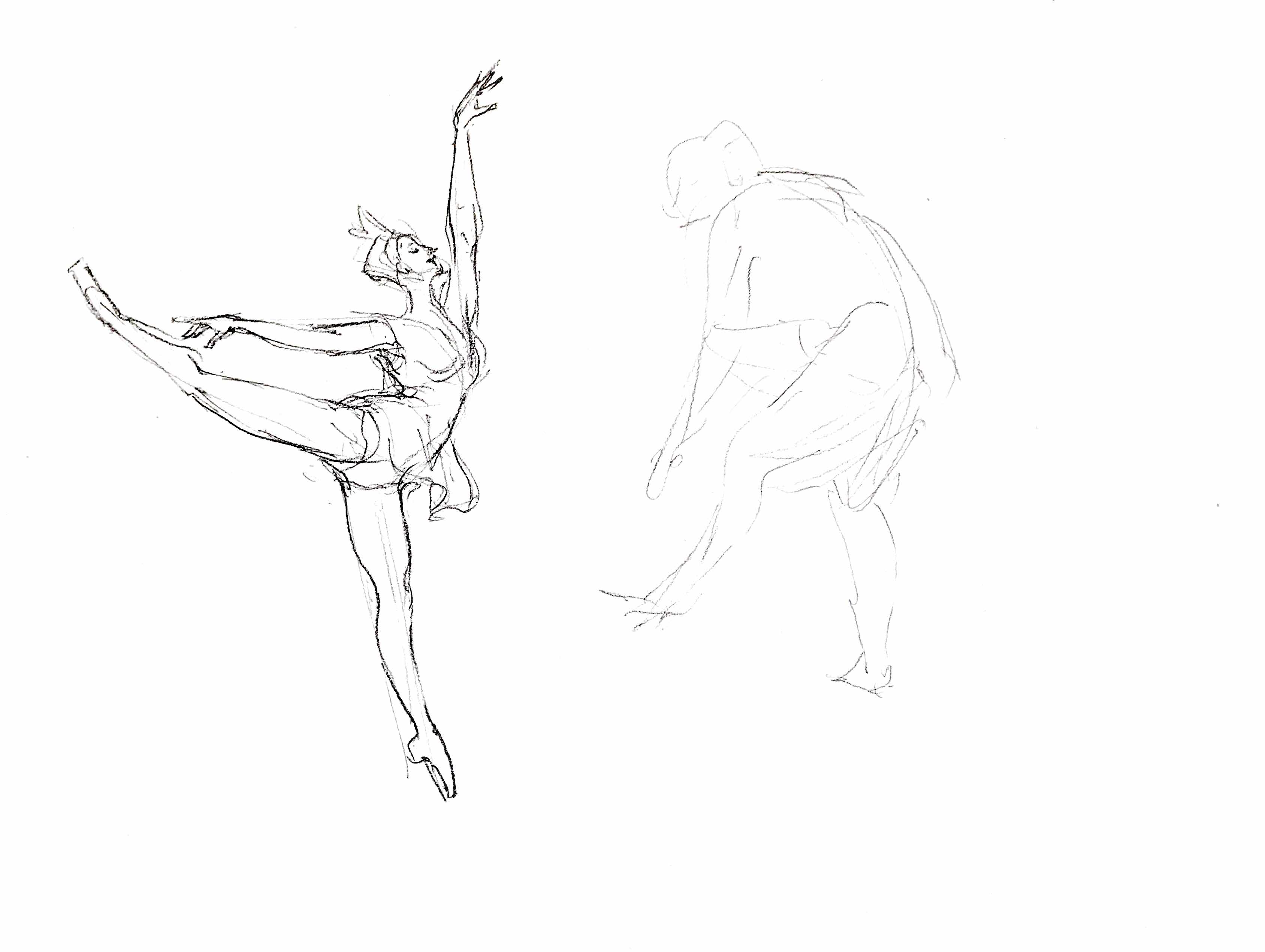
Oftentimes with figure drawing like this, relatively short timed poses, the urgency translates to immediacy, and you’re just reacting. Trying to solve the puzzle of the human body on paper. I don’t have time to fuss with a wonky hand — if I drew it wonky the first time that’s just how it’s gonna be. And for me, that is good. The immediacy means that the inner critic can’t quite catch up, and the ego is left behind– at least a little.
These I was doing alone at home, from photo reference. But I remember the feeling of actually doing it in person, and in a studio setting there’s almost a performative aspect to it. The timer dings, the model settles into their pose, and then everyone kind of launches at their pages — some softly, gently, others with big movements and scratching sounds. It reminds me of watching orchestras: the cacophonous tuning, settling in as the conductor comes out, lifts their baton, that moment of anticipation before… they set off. A figure drawing session isn’t nearly so grand, but it is a different kind of drawing; you only have so much time to be involved with this person, and it’s made all the more visceral by the fact that they’re right there, breathing, holding their body in the pose for you. The drawing has a beginning, middle, and end that expands over the time period. Perhaps that’s what I mean by ‘performative’, action taking place over time with other people, like music. Not all drawing is like that. (Log 5 - on drawing, three ways from three books)
Every so often I think back to when I was in a college figure drawing class, and the model at the time, a middle-aged woman who’s portrait I had been drawing for the past hour, asked me, “When is a drawing done?”
I think I replied something like, “When you can’t see anything more.” Or maybe it was, “they’re never actually finished.” To be honest, my memory is fuzzy so perhaps I never said anything of the sort. But I do come back to that question — not that it’s a unique one. Sometimes I choose to leave something unfinished, because I’m just not quite happy with it and feel like there’s something more I could do, and with best intentions to come back to it and do it… even though I don’t. Other times I feel like giving it a title and ‘posting’ or presenting it somewhere means it’s ‘done’.
With the model, however, maybe ‘done’ means something else in the portrait/figure drawing context. Afterall, you’re sharing that time with someone else, a real human being. When they get up from their pose it’s done. Your shared time and space is done when they pack up and leave. Of course, you can add, augment, or continue whatever image you drew. But that moment of the drawing has ended.
I later wrote in my journal:
The drawings, I keep going back to them to look again. After a bit of time away, you can forget the struggle, the attempt that was made in the act of drawing, and instead it becomes a kind of small miracle — “I made that.” It feels like something other, and in the process, becomes something I can look at and wonder, “how did that line come into being? That curve appears here, there, and oh, in this one too…” and other observations. There’s also just delight in having made a thing. Maybe we need to value delight more.
 Log 7 - three old guys
Log 7 - three old guys